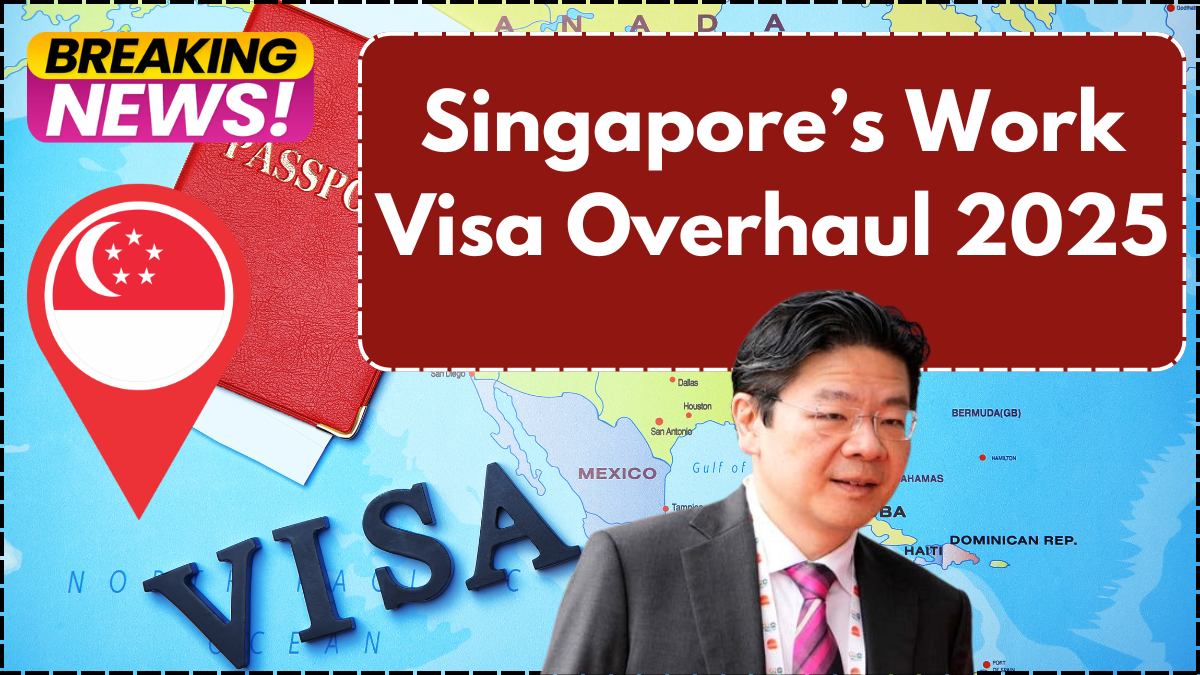Singapore’s Ministry of Manpower (MOM) has implemented major reforms to its work visa policies in 2025, aiming to ensure workforce stability and address labor shortages. These changes impact employment duration, age limits, source countries, occupations, and salary thresholds. Employers and foreign workers must adapt to these updates to remain compliant and competitive.

Removal of Employment Duration Limits for Work Permit Holders
As of July 1, 2025, Singapore has eliminated the maximum employment period for Work Permit holders. Previously, employment durations ranged from 14 to 26 years, depending on sector, skills, and country of origin. Now, Work Permit holders can continue working indefinitely, as long as they meet eligibility requirements and their employer retains them. This change reduces employee turnover and training costs, benefiting both businesses and workers.
Increase in Maximum Employment Age
To enhance workforce continuity, Singapore has raised the maximum employment age for Work Permit holders from 60 to 63 years, aligning it with the national retirement age. Additionally, the maximum application age for new Work Permit applicants has increased to 61 years, up from 50 years for non-Malaysians and 58 years for Malaysians. This policy ensures experienced workers can contribute longer, stabilizing the labor market.
Expansion of Source Countries and Eligible Occupations
To address labor shortages, Singapore has broadened its list of approved source countries for Work Permit holders. From June 1, 2025, employers can recruit workers from Bhutan, Cambodia, and Laos, expanding the existing list, which includes nations like Bangladesh, India, and Myanmar.
Additionally, from September 1, 2025, the revised Non-Traditional Source (NTS) Occupation List will include more job roles, such as heavy vehicle drivers, specialized manufacturing workers, and diverse cuisine chefs. This expansion provides businesses with greater hiring flexibility in industries facing labor shortages.
Increased S Pass Salary Requirements
The salary threshold for S Pass applicants has been revised to attract more skilled workers. Effective September 1, 2025, the minimum qualifying salary will increase from S$3,150 to S$3,300 for all sectors except financial services, which will have a higher threshold of S$3,800. These adjustments align with the top one-third of local Associate Professionals and Technicians (APT) salaries, maintaining hiring competitiveness.
Standardization of S Pass Levy Rates
From September 1, 2025, a uniform levy rate of S$650 will apply to all S Pass holders, regardless of sector. This measure aims to encourage employers to reassess workforce strategies, considering the additional costs associated with hiring foreign professionals.
Extension of the Manpower for Strategic Economic Priorities (M-SEP) Scheme
The M-SEP scheme, which allows firms to hire additional foreign workers beyond the standard S Pass and Work Permit quotas, has been extended. From May 1, 2025, M-SEP approvals will last three years instead of two. Eligibility criteria have been expanded to include commitments to leadership training programs abroad, ensuring companies have the talent necessary for growth and innovation.
Introduction of the Enterprise Workforce Transformation Package
To help businesses restructure jobs and develop workforce capabilities, the government has launched a S$400 million Enterprise Workforce Transformation Package. Set to roll out in 2026, this initiative consolidates various workforce transformation programs under the SkillsFuture Workforce Development Grant, streamlining applications. Additionally, advisory services through “program partners” will assist businesses in adopting job redesign strategies.
Also Read: $1,300 Government Payout for Singaporeans in March–April 2025: Full Schedule and Eligibility
Summary of Key Changes
| Policy Update | Description | Effective Date |
|---|---|---|
| Work Permit Employment Duration | No maximum employment limit for Work Permit holders | July 1, 2025 |
| Maximum Employment Age | Increased to 63 years; new applicants up to 61 years | July 1, 2025 |
| Source Countries Expansion | Bhutan, Cambodia, and Laos added to approved list | June 1, 2025 |
| Occupation Expansion | Additional roles in transport, manufacturing, and culinary sectors | September 1, 2025 |
| S Pass Salary Increase | Minimum salary raised to S$3,300; financial sector S$3,800 | September 1, 2025 |
| S Pass Levy Standardization | Uniform levy rate of S$650 for all S Pass holders | September 1, 2025 |
| M-SEP Scheme Extension | Approval period extended from two to three years | May 1, 2025 |
| Enterprise Workforce Transformation Package | S$400 million investment in workforce development programs | 2026 |
Frequently Asked Questions (FAQs)
Q1: How do these changes benefit employers?
Employers can retain experienced workers longer, reducing hiring and training costs. Additionally, access to a broader talent pool ensures businesses can fill vacancies more efficiently.
Q2: What does the removal of employment duration limits mean for workers?
Foreign workers can remain employed indefinitely as long as they meet eligibility requirements, ensuring greater job security.
Q3: How will the S Pass salary changes impact hiring?
The increase in salary thresholds ensures companies hire highly skilled professionals while staying competitive with local wages.
Q4: Why were new countries added to the source list?
Expanding the source list helps Singapore address labor shortages in critical sectors, giving employers more hiring options.
Q5: How does the Enterprise Workforce Transformation Package support businesses?
It provides funding and advisory services to help companies redesign jobs and develop workforce capabilities, ensuring long-term growth.
These comprehensive reforms reflect Singapore’s commitment to maintaining a strong, competitive, and stable labor market, benefiting both employers and foreign workers in the evolving economic landscape.
Click here to know more.
Akesh is a furniture expert with years of experience in design and craftsmanship. Specializing in sustainable materials, he shares his expertise to help people create stylish and functional living spaces.
